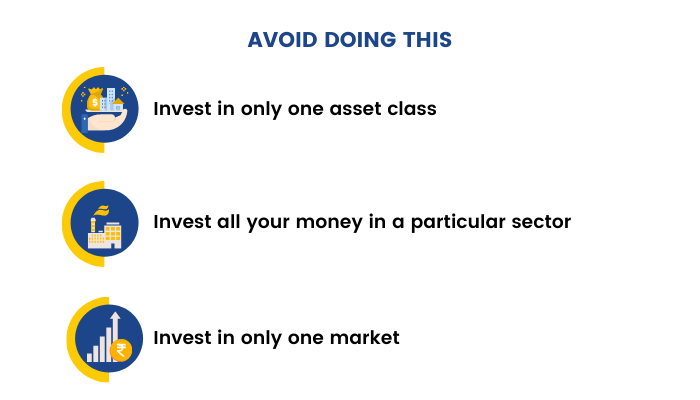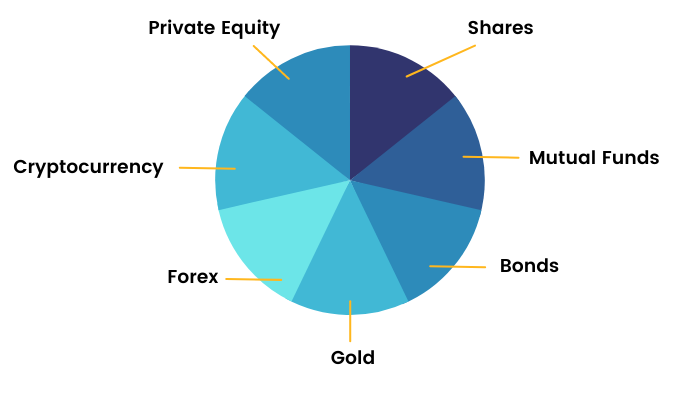Portfolio Diversification
Now, we come to the most important aspect of a portfolio – portfolio diversification. We explained liquidity, volatility and risk in the previous sections, which will help us understand portfolio diversification better.
So, what is it?
Portfolio diversification is the process of investing in different asset classes, sectors and markets to minimize the overall risk of your portfolio.
Taking the example of Yes Bank, we discussed it earlier. Imagine you invested all your money in Yes Bank. On 6th March, when the prices fell from ₹ 36.85 to ₹ 16.20, you would have lost more than half of your money.

We follow portfolio diversification mainly to avoid such a scenario. And this is where alternative investments become very useful. They give us more choice to diversify and more markets to invest in.
The main purpose of portfolio diversification is to reduce risk – risk associated with a particular market, risk associated with a particular company, risk associated with a particular country and so on.
A well-diversified portfolio looks something like the picture below. There should be a range of asset classes. You can also diversify into various markets such as India, Hong Kong, the USA, Europe and so on.

How to diversify your portfolio?
Here are some common ways you can diversify your portfolio:
1. Include a variety of asset classes: As we mentioned earlier, investing in a variety of asset classes is the first tenet of diversification. Be it fixed deposits, stocks or gold – keeping only one asset class in your portfolio will either prove too risky or will earn you lesser returns than you potentially could earn.
Instead, go for a mix. Include the asset classes that you feel comfortable in. Learn about different asset classes to expand your portfolio’s horizon.
Within our ELM School, you will find detailed modules about all the popular asset classes in the world. You can start your educational journey from here.
2. Expand to different industries: Include several industries into your portfolio so that if one industry performs negatively, your entire portfolio is not severely affected by it. For example, in 2020, the prices of crude oil went down drastically. At the beginning of the year, WTI Crude Oil was trading at $61.17 per barrel. It went down to $11.26 during the year. If your portfolio was heavily inclined towards crude oil, imagine the amount of loss it would have suffered.
This is why including a variety of industries is always recommended.
3. Continue to build your portfolio: Portfolio creation is a lifelong phenomenon. Every time you invest your money, however small it might be, you are building your portfolio. Keep diversifying whenever you build your portfolio. In case you are investing in mutual funds, take the SIP route. The rupee cost averaging will help you in the long run.
4. Know when to get out: Getting out is as important as getting in. If an asset class you have invested in has not performed as per your expectation for a long time, it will be wise to get out and invest in another asset that is performing. It is human to make mistakes, moving on and exploring other avenues is very important.
Finally, it is important to remember that diversification does not mean that there will not be any losses. It is a method to minimize risk, not eliminate it completely.


